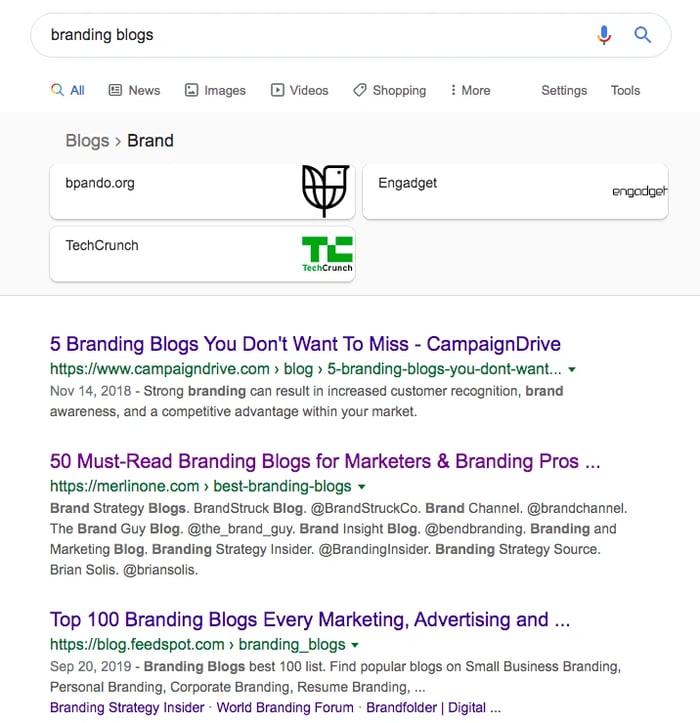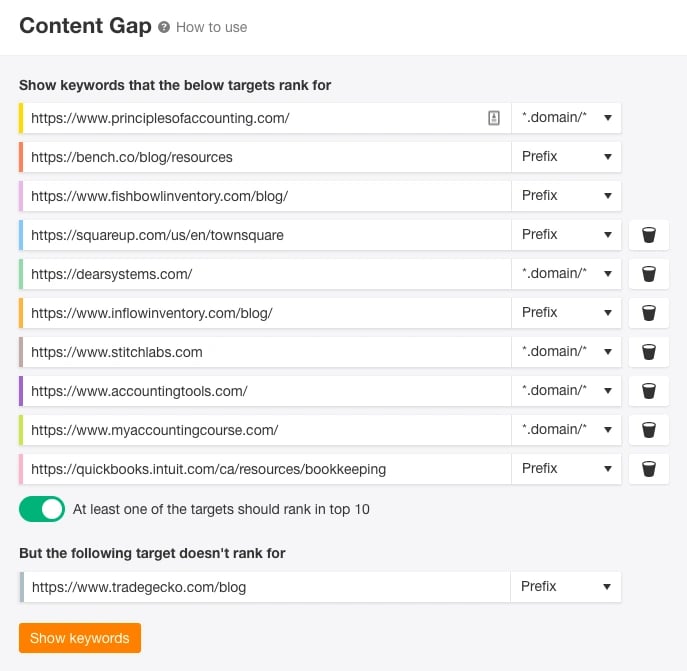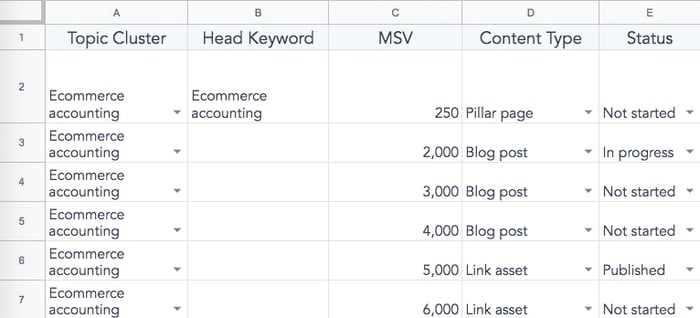First things first:
Why use a Search Insights Report?
There are tons of benefits to this system, including:
- Ensuring every piece of content has a pre-defined goal
- Helping you avoid content cannibalization (since each post is assigned to a specific topic)
- Keeping your content and SEO teams on the same track
- Baking SEO best practices into every piece of content you produce
- Letting you easily track whether you're ranking for the terms you set out to rank for
How big should a Search Insights Report be?
The optimal S.I.R size depends on A) how much content you can publish and B) how often you'll release new reports.
HubSpot has a big team of writers and a quarterly S.I.R release schedule, so we shoot for 200 posts per report. If you have two writers, each producing three blog posts per week, and you plan on creating one report per month, every report should have roughly 24 pieces of content.
Target S.I.R size = yearly content output / yearly S.I.R output.
1. Select your focus topic clusters.
Candidly, this step is the toughest one. The topic clusters you pick will form the basis of your entire report — so it's important to choose the right ones.
Start with your topic gaps, or the "holes" in your content. To identify your content gaps, ask yourself:
- What are the topics my customers care about that I'm not addressing?
- What are the questions they have I'm not answering?
Those are pretty broad questions, so narrow things down by looking at your product and/or service pages.
Every product or service you provide should have at least two (and usually more) topic clusters. That typically shakes out to one topic cluster per feature.
Let's say you provide (among several other things) branding services. From talking to your customers, you know a big question many of them have before they come to you is, "How do I come up with a brand identity? What assets do I need to 'create' a brand?"
If you don't have much (or any!) content on brand identity on your site or blog, that's a topic gap. It's important to your audience, it's relevant to your product, but it's not proportionally covered on your website.
2. Identify content competitors.
Once you've honed in on a topic gap, the next step is figuring out all the websites that publish content on that topic.
These are your competitors — not in the typical sense, as many of them won't sell competitive products or services — but from a ranking perspective.
I call them "content competitors" (bet you never saw that one coming!). There are a few techniques you can use to track down content competitors. I cover the full list in HubSpot's Search Insights Report course.
One strategy is simple but effective: simply search for "[insert topic cluster] blogs" and "[insert topic cluster] websites".
Here's what I get for "branding blogs":

I'll open each page in a new tab and copy every single blog or website mentioned in the listicle.
3. Run a competitive analysis.
Now that you have competitors, you can figure out the terms they're ranking for that your site is not.
During this step, a keyword research tool is invaluable. I've tried tons of different tools and would recommend Ahrefs. However, if you're already using SEMrush, Moz, or Alexa, there's no need to switch software just for this project.
On a tight budget? The Hoth lets you run a (limited) content gap analysis for free.
After you've chosen a tool, plug in your content competitors:

You'll get a huge list of topic-specific keywords.

Treat every keyword as a potential blog post.
There are a few questions to ask yourself for every keyword. If you answer "no" at any point, the keyword isn't a right fit:
- First, and most importantly, is this idea or subject relevant to my audience?
- Next, is there a higher-volume synonym for this keyword I should target instead?
- Is the monthly search volume (MSV) high enough to justify the effort of creating a post?
- Can I feasibly rank for this keyword? (In other words, is the MSV and/or the competitive score too high?)
Once you've qualified a keyword, you're ready to move on to the next step.
4. Fill out the S.I.R with keyword research.
This is the fun part — translating your keyword research results into insights for your content creators.
It took me a few tries to develop the right format for this report. If you don't want to shed your own blood, sweat, and tears, good news: you can download a customizable version of the S.I.R right here.
In my Academy course, we walk through how to fill out every field in this report.
Here are the highlights:

Columns B and C
- Every blog post should target 3-5 keywords: one head keyword (the broadest, most high-level term), and 2+ longer-tail keywords
- Add the head keyword to Column B and its MSV to Column C

Column H
- The title of your blog post should always include your head keyword (which you've just added to Column B)
- If you'd rather have your writers come up with a title, leave this row blank —just make sure they know to incorporate the head keyword in whatever title they create
Column I
- Here's where you add long-tail keywords. I like to note their MSV as well (like so: "marketing case studies (500)"), so the writers understand the ROI of including that section in their post

Column J
- Add longer-tail keywords here; for example, if one of your recommended H2s is "marketing case studies," your recommended H3s would include "Nike marketing strategy case study (30)", "Uber marketing case study (10"), and so on.
Column K
- Here's where you add featured snippets your writers should target in the post (if any). I include the snippet type (paragraph, list, or table), as well as the MSV
When I introduced this report to HubSpot's blogging team, I held a training that went over every aspect of the report and how to interpret it. I also sent out the recording and slide deck so our team had something to reference (and new writers, as they joined the team, could quickly learn the process!).
I recommend doing something similar to make sure adoption goes smoothly. Also, don't be afraid to tweak the report for your own needs. If your team doesn't need specific columns (like writer or status), get rid of them; conversely, if they want more information (like columns for recommended length and other articles to link to), add them in.
If you create your own S.I.R., we want to hear from you! Tweet a screenshot of your report to @HubSpotAcademy and @ajavuu for a chance to be featured in an upcoming blog post.
SEO Strategy






![How to Create an SEO Strategy [Template Included]](https://53.fs1.hubspotusercontent-na1.net/hubfs/53/SEO-Strategy.png)

![Should Marketers Optimize for Bing? [Data + Expert Tips]](https://53.fs1.hubspotusercontent-na1.net/hubfs/53/BING-SEO%20(1).png)


![How Web Strategists Think SGE Could Impact Search Pages [New Data]](https://53.fs1.hubspotusercontent-na1.net/hubfs/53/Copy%20of%20Featured%20Image%20Template%20Backgrounds%20(5)-1.png)
![How to Find SERP Feature Opportunities [+ Free Tools]](https://53.fs1.hubspotusercontent-na1.net/hubfs/53/serp-feature-opportunities.jpg)
